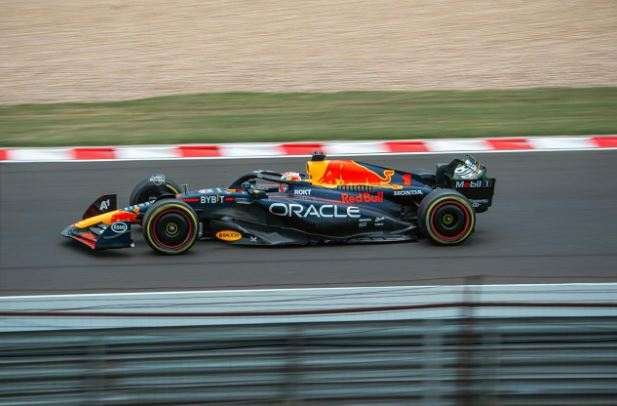
The 2025 Formula One season is running red-hot—a campaign loaded with unpredictability, technical intrigue, and a rivalry that has seized every racing fan’s attention. McLaren, not long ago far closer to the back of the grid than the front, has become the architects of a narrative none imagined: Lando Norris and Oscar Piastri, two of the grid’s brightest young stars, are locked in a ferocious, point-for-point dogfight for the drivers’ world championship.
For the last four years, Max Verstappen has been the dominant force, ruling over the rest of the paddock with an iron fist. However, his Red Bull is no longer the fastest car on the grid after a series of upgrades throughout last season and into this, from McLaren, have seen the Papaya outfit storm clear. Now, their two drivers find themselves head and shoulders clear of the rest of the pack, and excitement over the title race throughout the second half of the season is reaching a fever pitch.
The 2025 championship battle will be covered in depth by the up-and-coming LuckyRebel.la website. The new outlet is set to launch in mid-August and is thought to be one of the first places that racing aficionados should head on a race weekend. And not just that, but the site will be covering all top sports, including the return of the English Premier League and the 2025 NFL season. But another topic that the website will surely have to cover is next season’s sweeping F1 regulation changes, all of which are aimed at making the sport greener.
Just one lap ahead—and coming fast—the most dramatic technical overhaul in modern history awaits. For F1’s architects, 2026 isn’t just a date on the calendar; it’s the launchpad for a revolution shaped by environmental urgency, scientific rigor, and the ambition to set a new global standard in sustainable sport. So, what is there to look forward to?
100% Sustainable Fuel
At the absolute epicenter of F1’s green transformation is a fuel breakthrough with seismic implications. From 2026, every car on the grid will run exclusively on fully synthetic, 100% sustainable fuel—a concoction born from non-food bio-waste, atmospheric carbon capture, and pure renewable energy. Not a drop is linked to crude oil. The most significant detail? This isn’t a one-trick pony for billion-dollar toys: the fuel is “drop-in,” engineered to power ordinary combustion engines across road vehicles worldwide.
Surprisingly, the cars on track themselves account for less than 1% of the sport’s overall emissions, but the ambition here is vastly larger. Formula One’s platform as a live, high-performance laboratory is central to proving that “green” can be competitive, can be sexy, can be the new standard.
MGU-K’s Quantum Leap
The push for sustainability has never been so visceral, nor so mechanically compelling. The 2026 technical regs throw gasoline—or more accurately, electricity—on the hybrid revolution. The MGU-K, F1’s kinetic energy marvel, will see its electric output nearly triple: from 120kW to a staggering 350kW. Picture this—a 50/50 split in propulsion between electric and combustion, a balance never before seen at the sport’s pinnacle. Gone is the MGU-H, a casualty of complexity and cost. What remains is power and efficiency, distilled.
Why does it matter? This is strategy, chemistry, and racecraft rewritten in real time. Teams will battle for control of the energy equation, with harvesting, deployment, and recovery all dialed to new stakes. The sport’s very tempo shifts, as drivers manage batteries as carefully as fuel loads, playing a new chess game at 200mph.
Net-Zero Carbon Engines
F1’s heart has always been its engines—a fusion of design, mathematics, and myth. In 2026, these power units will double as manifestos. The new 1.6L V6 hybrids are built to run net-zero on sustainable synthetic fuel. Regulations are iron-clad: manufacturers like Red Bull Ford, Mercedes, Ferrari, Audi, Honda, and Alpine must comply with strict lifecycle emissions, from assembly lines to chequered flags.
This is performance, measured beyond speed. These technical standards are meant to pressure the auto giants not simply to win on Sunday, but to build greener, smarter, world-changing technology on Monday. For every lap turned in Monaco or Monza, the lessons learned may soon power millions of cars around the globe. It’s not just the fastest who wins now, but the cleanest.
Lifecycle Sustainability
Sustainability in 2026 will stretch from raw material to the recycling yard. The FIA is introducing environmental lifecycle assessments for all power unit parts and fuels: think cradle-to-grave scrutiny. The rules demand carbon neutrality through certified offsets, recycled material quotas, and strict limitations on the use of rare or hard-to-mine elements in electronics.
This isn’t just a box-ticking exercise. These measures are set to expand accountability beyond Sunday’s lights-to-flag drama, forcing teams and suppliers to prove sustainability in manufacturing, logistics, and retirement. It’s a challenge to the entire sector: build cleaner, source responsibly, and show your work. For industries beyond racing, this could serve as a playbook for how supply chains take a hard turn toward real environmental impact.
Chassis Revolution
A lighter frame. A smaller shape. Aerodynamics will be slashed to the bone. In 2026, the minimum car weight drops by 30 kg—even as power units pack more punch. Wheelbases and overall car length shrink. Aerodynamic drag is set to plummet by an expected 55%. The result: F1 cars that are not just quicker and trickier to handle, but markedly more efficient in their thirst for fuel and electricity.
These aren’t numbers for the tech charts alone. Lighter, more agile cars mean strategy over brute force; innovation over inertia. Watching the world’s best engineers test new solutions in wind tunnels and simulation rooms, all while under the relentless stopwatch of F1, guarantees drama and relevance all the way down the grid.
The post Formula One’s Sweeping 2026 Regulation Changes and the Bid To Become Greener Than Ever appeared first on Green.org.














